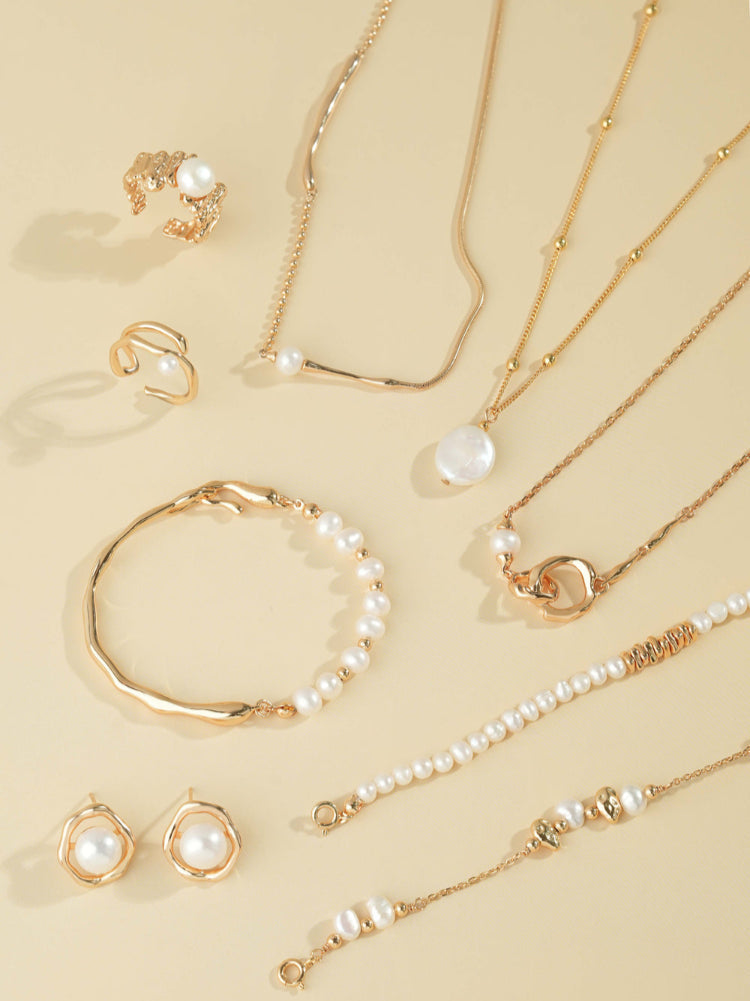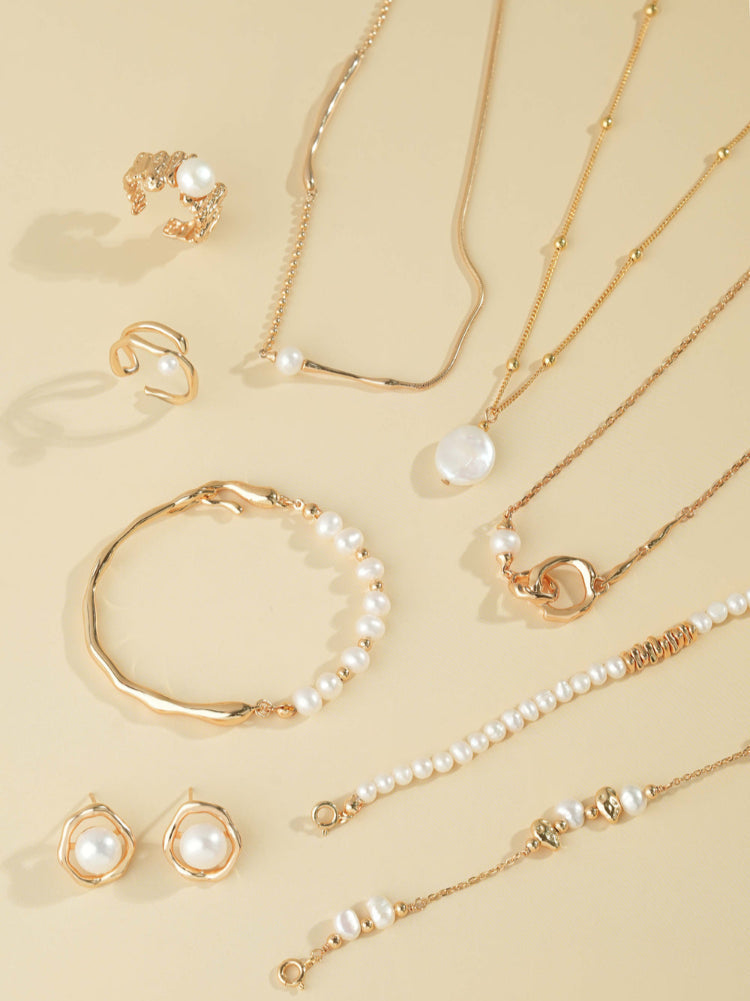Pearl jewelry, with its timeless allure, has been a cornerstone of cultural expression for centuries—adorned in royal regalia, celebrated in art, and cherished as heirlooms. Today, this rich legacy of craftsmanship and symbolism is merging with modern sustainable values, transforming pearl jewelry into a testament to both aesthetic heritage and ecological responsibility. Let’s explore how traditional narratives and innovative design are reshaping the future of this iconic adornment.

Pearl Jewelry as a Cultural Artifact
1. Historical Significance in Adornment
Eastern Royalty: Ming Dynasty empresses wore pearl-encrusted headdresses, symbolizing celestial authority.
Western Elegance: The Victorian era’s pearl chokers and Edwardian-era pendant necklaces marked social status, with pearls often paired with gold and diamonds to enhance their luster.
Cultural Rituals: In Japan, pearl jewelry featuring Akoya pearls became a symbol of post-war revival, blending traditional kimono aesthetics with modern design.
2. Craftsmanship as Cultural Preservation
Techniques like tasuki knotting (Japanese pearl stringing) and Chinese mianjin embroidery for pearl settings showcase how jewelry acts as a carrier of intangible cultural heritage, prioritizing human skill over mass production.
Sustainable Design: Honoring Legacy Through Innovation
1. Material Revival for Modern Jewelry
Recycled Metals: Brands now use 95% recycled silver and gold for jewelry settings, such as Tiffany’s EcoPearl Collection, which pairs vintage pearls with reclaimed precious metals,reducing carbon footprints by 30%.
Bio-Compatible Materials: Innovators like Credo use mushroom-based composites for pearl bracket,merging sustainability with the organic elegance of traditional pearl jewelry.
2. Design Innovations with Cultural Roots
Traditional Jewelry Element Sustainable Adaptation Modern Jewelry Example
Symmetrical Pearl Arrangements Modular, Adjustable Designs Mikimoto’s Convertible Pearl Necklace: Transforms from a choker to a layered bracelet
Ornate Pearl Embellishments Minimalist, Low-Waste Silhouettes Ruan’s Pearls’ Bamboo Series: Uses 3D-printed recycled silver to mimic traditional bamboo patterns with 80% less material waste
Pearl-Driven Heirloom Pieces Repairable and Upgradable Structures Cartier’s Pearl Reimagined service: Restyles old pearl jewelry with new sustainable settings, extending product life by decades
Cultural Storytelling in Jewelry Marketing
Bridging Past and Present
Mikimoto: Draws on its 130-year legacy of pearl jewelry craftsmanship, framing sustainable practices as an evolution of its "Pearls as Art" philosophy.
Vintage Revival: Brands like Retrouvaí source antique pearl jewelry, restoring and recrafting them with eco-friendly materials, narrating stories of "second-life elegance."
Transparent Sourcing: Blockchain-enabled provenance tracking for pearl jewelry, such as Brilliant Earth’s Pearl Journey feature, allows consumers to trace their piece’s cultural and ecological roots.
Crafting Legacy with Purpose
Pearl jewelry today is more than an accessory—it’s a dialogue between the past and present. By integrating traditional craftsmanship with sustainable materials and innovative design, it honors the artistry of generations while embracing responsibility to the planet.
Explore our pearl jewelry collection, where every piece blends cultural heritage with modern sustainability—crafted to be worn, cherished, and passed down. 🌊✨





